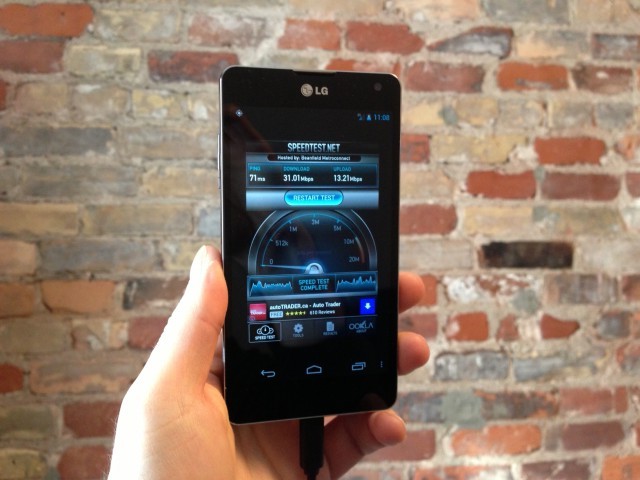
The Nexus 4 has been available for just over two months, but in reality it’s been on sale for just two days.
Now that the dust has settled and reality has set in — despite its achievements, the Nexus 4 isn’t all it’s cracked up to be — I’ve had some time to spend with its carrier-sold better half. The Optimus G was also released in November, and while it hasn’t received the near-universal praise of its Google-sold counterpart, it’s a great phone in its own right.
Over the last week or so, I’ve been using the Optimus G almost exclusively as my “Nexus” phone in an effort to understand the limitations of the Nexus 4. Granted, out of the box the Optimus is almost nothing like the Nexus; it takes some messing with the bootloader and installing a version of CyanogenMOD 10.1 to get where I’m comfortably sitting. And until recently the CM10.1 build for the Optimus G was buggy and had too many missing features to be considered for use as a daily driver.
All that changed about a week ago when WiFi, hotspot tethering and the volume controls were fixed, leaving only NFC and the capacitive keys as remnants of a broken ROM. The former is inconsequential to me; the latter just means that the Optimus G looks and feels almost exactly like the Nexus 4 (and loses a bit of vertical real estate in the process.)
So, without further ado, four reasons the Optimus G makes a better Nexus 4 than the Nexus 4:
1) It’s better constructed
This may seem obvious when you compare the two phones’ full purchase price, but the Optimus G feels a lot sturdier than the Nexus 4. While the front and back of both devices is covered by Corning Gorilla Glass 2, it’s the soft plastic chrome on the side of the Nexus 4 that, after two small drops looks like a mangled mess, that helps me appreciate the Optimus G. And though I love the randomness of the Nexus 4’s spectral backing, I too love the stately and business-friendly look of the Optimus G’s square face and repeating back pattern.
2) It’s LTE-native
The Nexus 4 does support LTE, but it’s a happy accident and requires flipping a switch every time you restart the phone. The Optimus G, on the other hand, was designed to support LTE in both AWS or 2600Mhz bands (depending on your carrier) from the beginning, and as such works flawlessly out of the box. This leads to consistently-faster performance and less fiddling with hidden menus and APNs. It also allows you to achieve a Nexus 4-like experience on Rogers’ and Bell’s 2600Mhz networks, which results in faster speeds and less slowdown during peak usage periods. It also results in…
3) Better battery life
The Optimus G may not have a larger battery than the Nexus 4, but it certainly makes better use of what it has. Even when running CyanogenMOD 10.1, which is a custom ROM that doesn’t take into account LG’s battery optimizations in its shipping software, the Optimus G lasted, on average, three to four hours longer on a charge than the Nexus. While your mileage may vary, and I still obtained slightly better battery life from LG’s Android 4.0.4 ROM than on CM10.1, the results speak for themselves.
And, finally, the last reason the Optimus G is a better Nexus 4 than the Nexus 4:
4) It’s available!
—
Now, don’t take this column too seriously. I’m not really suggesting people run out and buy an Optimus G in order to recreate the hard-to-find Nexus 4 experience. But the fact that the two devices are so physically and internally similar means that, with a bit of work, one can come as close as possible to the Nexus 4 today.
Of course you miss out on receiving OTA updates from Google directly, and you’re at the whim of a small group of Android developers who may at some point choose to no longer support CyanogenMOD on the Optimus G. Then there’s the question of whether it’s worth signing a three-year contract for the privilege — the Optimus G is $650 off-contract and currently $99 on contract — just to satisfy the need.
If you’re already an Optimus G owner, you can head to the XDA Developer forum for an easy walkthrough on how to get CyanogenMOD 10.1. The build is compatible with both the Rogers E971 version and Bell/TELUS E973 versions. Just remember to back up your original ROM!


